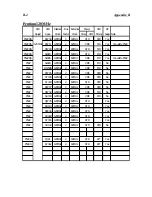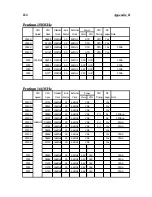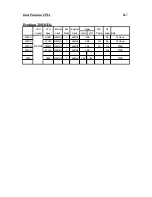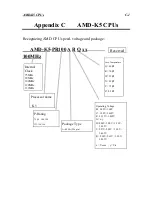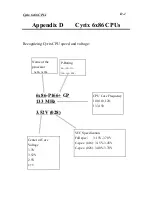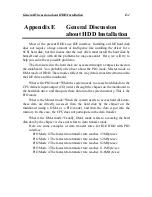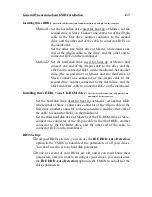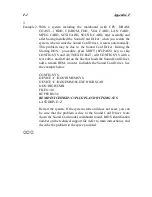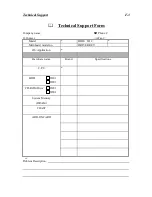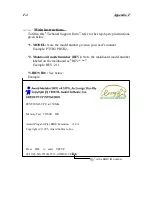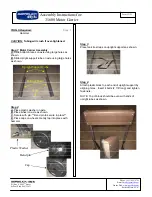
Appendix E
E-6
♦
If one or several of your HDD are old, and if you don
’
t want to erase
the data stored in your drives, you will have to remember the
parameters (Type, Cylinders, Heads, Sectors, Mode) of the drive(s)
you don
’
t want to erase. After you have used the IDE HDD Auto
Detection option in the CMOS, enter the Standard CMOS Setup
Menu to change the settings of the related hard disk drive.
Software use:
The basic step in using a hard disk drive is to make a HDD Low Level
Format, than run FDISK, and than FORMAT the drive. Most of present
HDD have already been subjected to low level format at the factory, so
you probably can skip this operation.
Boot with a bootable floppy disk, then enter FDISK.
Using FDISK: (DOS command)
This command is found in the DOS disks.
FDISK is a tool used to organize and to partition the hard disk. The
hard disk must have been partitioned before use. You can create one
unique partition on the hard disk, or create several partition and use a
different Operating System on each partition. Just don
’
t forget that
you have to specify an Active partition, otherwise your hard disk will
not be bootable. For further information about FDISK, refer to the
FDISK section in the DOS user
’
s manual.
After you have partitioned the hard disk with FDISK, the system will
reboot automatically. Boot from a system floppy disk, and type
FORMAT C:/S
Using FORMAT: (DOS command)
This command is found in the DOS disks.
FORMAT is used to format the hard disk. The HDD have to be
formatted before use. Don
’
t forget to add /S after C:, otherwise the
hard disk will not be bootable after formatting.
Summary of Contents for AB-AR5
Page 2: ...Appendix F Technical Support ...
Page 6: ...1 4 Chapter 1 Layout diagram Fig 1 1 Layout diagram ...
Page 8: ...1 6 Chapter 1 ...
Page 28: ...2 20 Chapter 2 ...
Page 74: ...Appendix C C 2 ...
Page 76: ...Appendix D D 2 ...

